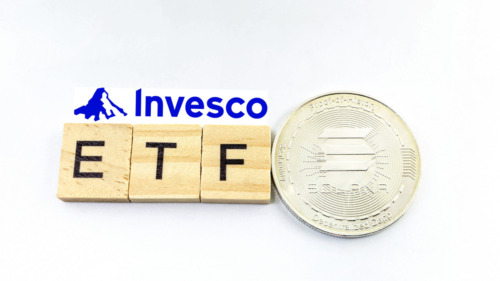VanEck Introduces Staking to European Solana ETN, Offering Investors Lucrative Rewards

- VanEck has introduced staking for its VSOL exchange-traded note product, allowing investors based in Europe to earn passive income through staking rewards.
- Investors will receive 75% of the staking rewards, with VanEck taking a 25% fee — investors will receive the same rate of staking rewards regardless of how long they’ve held VSOL.
VanEck has enabled staking on its Solana exchange-traded note (ETN), VSOL, allowing European-based investors to earn passive income through staking rewards.
According to VanEck’s Head of Digital Asset Research, Matthew Sigel, the rewards will accrue and be re-invested daily, with this additional value being automatically reflected in the daily net asset value (NAV) of VSOL. Claiming the staking rewards won’t require any additional action from investors.
VSOL was launched in the European market in 2021, trading on the German-based Deutsche Börse exchange — as of October 2024 it had US$73.8 million (AU$110m) worth of assets under management.
Related: Solana Leads 2024 Token Launches, Capturing Over 87% in Recent Surge
Staking Rewards to Be Distributed Equally
VanEck said VSOL staking will be fully non-custodial. The asset manager explained this means “that the custodian of the ETNs assets remains in full control of the staked assets”, adding that this method of staking means “there is no lending risk involved”.
In terms of how staking rewards are paid out, VanEck says investors will receive 75% of the staking rewards with VanEck pocketing the other 25%. Investors won’t need to do anything to claim rewards — they’ll be paid automatically and rewards will be distributed among all VSOL investors equally (proportional to investment), regardless of how long they’ve held:
Investors of the Solana ETN do not need to take any action, if rewards are paid out, they will be accounted for in the coin entitlement of the ETN. There is no difference whether you acquired the ETN last year or last week, the total staking rewards acquired during last timeframe will be equally distributed (minus the staking fee of 25%).
 VanEck announcement of VSOL staking
VanEck announcement of VSOL staking Any rewards accrued will then be reflected in the NAV on a daily basis.
More Technical Details of Staking Model
In response to a question asked on X/Twitter regarding whether VanEck run their own Solana validator node for staking, Sigel pointed out that regulation prevents asset managers from holding “customer funds directly due to the need for third-party segregation to protect client assets”. VanEck added that “staking customer funds to asset-manager-owned infrastructure raises similar concerns”.
Related: As Odds of Solana ETF Drop VanEck Exec Points to Potential Solution
To ensure regulatory compliance, Sigel says VanEck uses a model whereby the Physical SOL (SOL tokens) held by the ETN are staked to a validator node by the custodian under direction from VanEck, not by VanEck directly. The validator node the SOL is staked to is managed by a third-party staking provider and control of the SOL remains with the custodian at all times.






